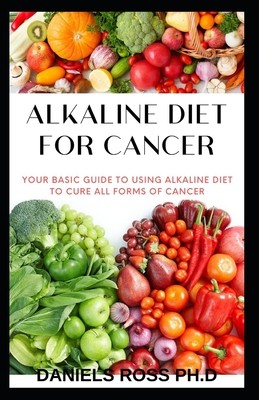| Alkaline Diet for Cancer: Comprehensive Nutrional Guide to Cure and Prevent Cancer Contributor(s): Ross Ph. D., Daniels (Author) |
|
 |
ISBN: 1712830716 ISBN-13: 9781712830710 Publisher: Independently Published OUR PRICE: $11.37 Product Type: Paperback Published: November 2019 * Not available - Not in print at this time * |
| Additional Information |
| BISAC Categories: - Health & Fitness | Diseases - Chronic Fatigue Syndrome |
| Physical Information: 0.13" H x 5.51" W x 8.5" (0.18 lbs) 62 pages |
| Descriptions, Reviews, Etc. |
| Publisher Description: First, let us understand what a high-alkali diet plan is. This is a diet which includes foods that have high alkali and low acid content. A high-alkali foods list would include items such as squash, lettuce, tomatoes, celery, carrots, onions, spinach, cucumber, chickpeas, parsley, basil, olive oil, limes and lemons, watermelons, etc. On the other hand, food items like meat, eggs, pasta, sugar, caffeine, tobacco, white rice, etc., have high acid content. Studies have proved that certain types of cancer cells flourish well in an acidic environment, whereas, high alkali content in the blood stunts their growth and spread. Laboratory experiments have even proved that chemotherapy shows better cancer fighting results if the area surrounding the cancer has an alkaline environment.However, the counter argument refuting the claims of alkali-rich diet benefits with regards to cancer state that, while it has been proved in test-tube environment that alkalies are effective in killing cancer cells, it has not been proved in any actual human study. Also, refuters of this diet (which include many noted oncologists and medical practitioners) claim that the body has several mechanisms through which it automatically restores the pH balance, preventing increase or decrease of both acid and alkali content. Therefore, deliberately increasing alkali content of the body by switching to a high alkali diet won't have any effect for any significant length of time, thereby, ruling out the possibility of having sufficient time to interact with cancer cells. |